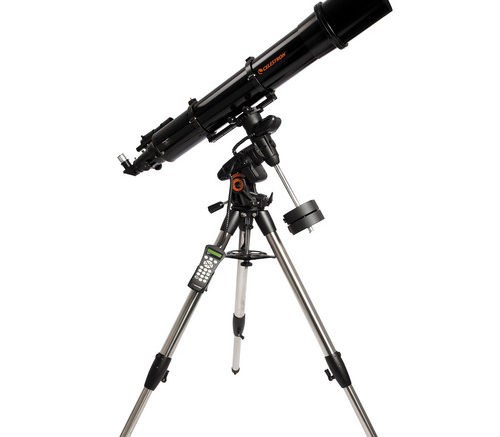Buying a telescope can be a challenge, as there are numerous options from which to choose. The mounts and telescopes widely differ in many ways, such as cost, size, and maintenance, and everybody has their own requirements for buy what they are looking for in a telescope. Cost can often determine the telescope, but so should the desired use and size of the scope. It is recommended that one talk over the considerations and reason for purchasing a scope with others, potentially using that type of telescope from a local astronomy club to make sure that the expectations of use meets the reality.
For example, Dobsonians are cheap and great telescopes for viewing but are big to transport and might not be the way to go for imaging. Reflectors can be more expensive, smaller and easier to pack into a car, but takes more time to setup as it has more moving parts. As this shows, purchasing a telescope is a complex endeavor that requires thought. In this article, we are going to provide some options that will hopefully provide some insight into the high level view.
Scope Types
Refractors


Created in the early 17th century in Europe, 1608 in Netherlands, refracting telescopes work by refracting or bending light. This allows the telescope to gather more light than normally available to the human eye. Popular refractors for amateur astronomers are not named after a specific person; therefore, when talking about a refractor to purchase, the telescopes are differentiated by the specifics. Most refractors utilize equatorial mounts, which allow for either manual or automated tracking of objects, but also increases the cost and complexity. Refactors are easy to use, rarely have collimation issues, are great for planets, moon, binary stars, and producing crisp images. Some negatives to consider are that refractors are expensive per inch of aperture, many refractors have a high f/ratio, have a narrow field of view, and and objects can appear dimmer.
Reflectors

Reflectors were invented by Isaac Newton. They have short f/ratios (f/4 to f/8), are great for imaging DSOs, not prone to colorization problems of refractors, but reflectors still must be collimated, provides the best price per inch of the major telescope types, and there is no diagonal needed. Negatives include the need to collimate often, which is an easy process, optics are not as good as refractors, and can be harder to transport if a different mount is used.
Catadioptric Systems

Catadioptric Systems (telescopes) are some of the most popular telescopes available as they are combinations of the Reflector and Refractor technology. This allows the telescopes to utilize the best of each technology and mitigate the negatives of both systems. Compound or catadioptirc telescopes are characteristically described by a middle price between refractors and reflectors, can handle high magnigication because of a large primary mirror, good but not great mirror for viewing objects, and does not prone to colorization problems of refractors. The negatives are complicated optics, hard to collimate, high f/ratios, the telescopes are heavy, have a long time to acclimate to the weather, and the central obstruction slightly reduces image contrast. A popular type of telescope that is a Catadioptric telescope is a Schmidt-Cassegrain Telescope. Most catadioptric systems and telescopes will utilize equatorial mounts as part of the setup to track objects in the sky.
There are some off-axis designs that eliminate the secondary mirror, but this is not seen as often for consumer grade telescopes.
Mount Types
Mounts can be determined by the desired price, weight, purpose, and cost. GoTo Mounts are more expensive, weigh more, automatically track the sky, and are more expensive; moreover, they allow for somebody who is new to astronomy to look at objects without having to learn the sky. Plus GoTos are the desired mounts used when imaging, but also work well for tracking. Altazimuth mounts are used when somebody wants to get to know the sky.
Equatorial Mounts

Equatorial mounts are more complex machines as they work on 3 axis’, but they allow for easy tracking for objects in the skies. Equatorial mounts can track objects in the sky either manually or via GoTo functionality, which will increase complexity of the mount and the amount of moving parts. Therefore, these mounts are more expensive and require more care during their lifecycle. The advantage is that equatorial mounts allow for astronomical tracking which is really helpful for imaging and observing. When a GoTo equatorial mount is used, a power source needs to be accounted for which is either provided at the location or accomplished by the astronomer bringing a battery. Equatorial and GoTo Mounts make it easier to find stars in the sky but typically are more expensive and require more care as the mounts contain more moving parts.
Altazimuth Mounts

Altazimuth mounts are “2 axis mount—vertical and horizontal—which allows for simple and efficient mechanical design. The drawback of having 2 axis’ is that altazimuth mounts have trouble tracking objects in the sky; however, there are automated methods that allow for object tracking. These mounts are popular with beginner telescopes, such as dobsonians, as the mounts are cheap and simple.” An unmotorized Altazimuth mount allows for astronomers to manually find the stars in the sky.

Leave a comment